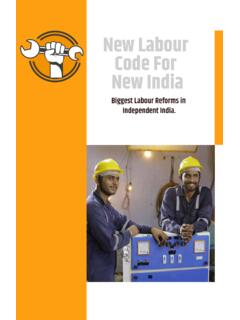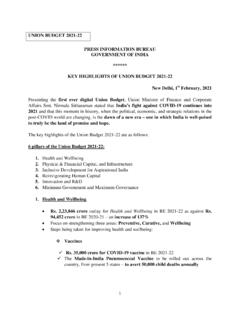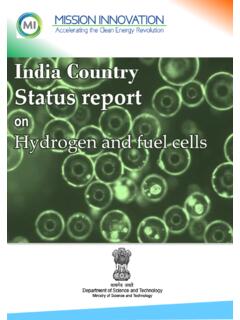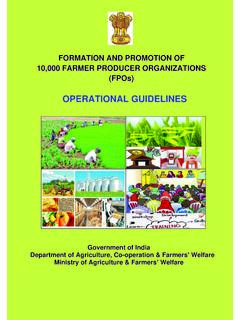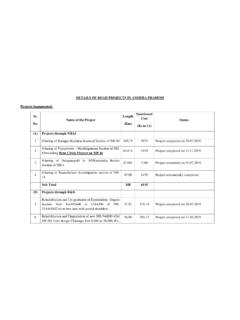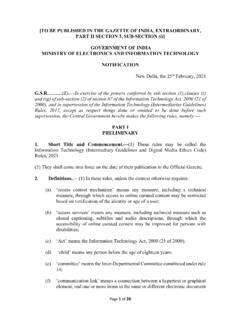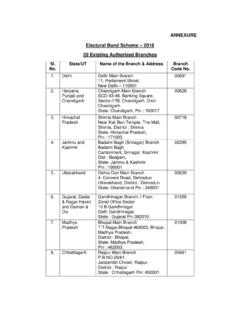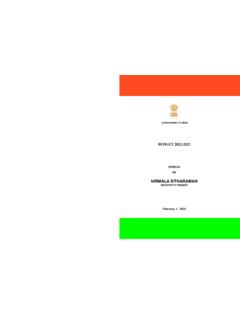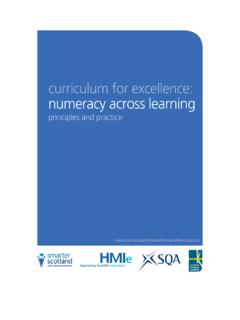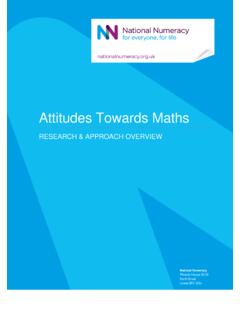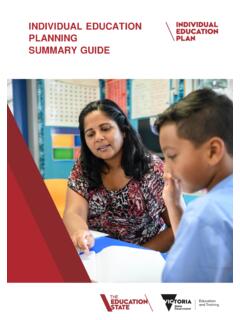Transcription of NIPUN BHARAT निपुणभारत
1 FOUNDATIONAL LITERACY AND numeracy NIPUN BHARAT NATIONAL INITIATIVE FOR PROFICIENCY IN READING WITH UNDERSTANDING AND numeracy NEP, 2020: augmenting student learning outcomes through FLNR ecognizingtheimportanceofearlylearning,t heNationalEducationPolicy2020statesthat Ourhighestprioritymustbetoachieveunivers alfoundationalliteracyandnumeracy(FLN) (reading,writing,andarithmeticatthefound ationallevel)isnotfirstachieved. Making foundational learning the highest priority for the country Achievinguniversal FLN in primary schools by 2026-27 Launching a National Mission on Foundational Literacy and NumeracyThe highest priority of school education will be Universal acquisition of Foundational learning skills by Grade 3 CHILDREN WHO FALL BEHIND, GET LEFT BEHINDG rade 3 is the inflection point by which children are expected to learn to read so that they can read to learn after that.
2 The Education system aims to achieve Foundational Literacy and numeracy by 2026-27, where, by Grade 3 every child with Comprehension WriteBasic Mathematical OperationsLearn basic life skillsFoundational SkillsHigher order learningBetter learning OutcomesWhat is Foundational Literacy and numeracy ? :OralLanguageDevelopmentIncludesimproved listeningcomprehension; FluencyReferstotheabilitytoreadatextwith accuracy,speed(automaticity),expression( prosody), ,butreadthemlaboriously, , domain includes the competencies of writing aksharasand words as well as writing for :Pre-number conceptsCount and understand the number systemNumbersandoperationsonnumbersLearn conventionsneededformasteryofMathematica ltechniquessuchastheuseofabasetensystemt orepresentnumbersMeasurementUnderstand and use standard algorithms to perform operations of addition, subtraction, multiplication and division on numbers up to three digitsDataHandlingIdentifyandextendsimpl epatternsstartingfromrepeatingshapestopa tternsinnumbers.
3 Interpretsimpledata/informationinhis/her dailylifeactivitiesShapesandSpatialUnder standingPerformsimplecomputationsinher/h isownwayuptothree-digitnumbersandapplyth esetotheirdaytolifeactivitiesindifferent contextsThevisionoftheMissionistocreatea nenablingenvironmenttoensureuniversalacq uisitionoffoundationalliteracyandnumerac y,sothatby2026-27everychildachievesthede siredlearningcompetenciesinreading, Mission: NIPUN BHARAT Vision National Mission: OBJECTIVES of the MissionTo ensure an inclusive classroom environment by incorporating play, discovery, and activity-based pedagogies, linking it to the daily life situations of the children and formal inclusion of children s home languages.
4 To enable children to become motivated, independent, and engaged readers and writers with comprehension possessing sustainable reading and writing make children understand the reasoning in the domains of number, measurement, and shapes; and enable them to become independent in problem solving by way of numeracy and spatial understanding ensure availability and effective usage of high-quality and culturally responsive teaching learning material in children s familiar/home/mother language(s). 4To focus on continuous capacity building of teachers, head teachers, academic resource persons and education actively engage with all stakeholders , Teachers, Parents, Students and Community, policy makers for building a strong foundation of lifelong ensure assessment as, of and for learning through portfolios, group and collaborative work, project work, quizzes, role plays, games, oral presentations, short tests, ensure tracking of learning levels of all , ,MinistryofEducation(MoE)willbetheimplem entingagencyatthenationallevelandwillbeh eadedbyaMissionDirector.
5 Academic approaches The Learning outcomes for Foundational learning have been divided into 3 Development goalsTheLearningoutcomesforFoundationall earninghavebeendividedinto3threedevelopm entalgoals:Goal1-HW(HealthandWellbeing), Goal2-EC(EffectiveCommunicators),Goal3-I L(InvolvedLearners).Keycompetenciesofeac hgoalhavealsobeenidentified. Thedevelopmentalgoalshavebeenfurtherdivi dedintosixlevelscorrespondingtothe3years ofECCE followedby3yearsofschooling. , Development of a childGoal 1:Children maintain good health and well-beingGoal 2:Children become effective communicatorsGoal 3:Children become evolved learners and connect with their environmentKEY COMMPETENCIESKEY COMMPETENCIESKEY COMMPETENCIESL earning Outcomes: One or more LOs for every competencyLearning Outcomes: One or more LOs for every competencyLearning Outcomes: One or more LOs for every competencyEffective Communication (EC)Health and Well-being (HW) Involved Learners (IL)Lakshyas.
6 Learning Goals of the MissionTheNationalMissionwilldeclaretheo verallnationaltargetsinachievinglearning outcomes,includingyearwiseoutcomestobeac hievedbytheyear2026-27 1 Grade 2 Grade 3 Readandwritenumbersupto99 Perform simple addition and subtraction Read with meaning at least 60 words per minute Read and write numbers up to 9999 Solve simple multiplication problems Read with meaning 45-60 words per minute Read and write numbers up to 999 Subtract numbers up to 99 Reads small sentences consisting of at least 4-5 simple words in an age appropriate unknown Recogniseslettersandcorrespondingsounds Reads simple words comprising of at least 2 to 3 alphabets.
7 Recognizesandreadsnumeralsupto10. Arrangesnumbers/objects/shapes/occurrenc eofeventsinasequenceLearning AssessmentsAholisticandpurposiveassessme ntisvitaltotrackchildren sprogressbyusingdifferenttechniquestohel pthestakeholdersto:Assessmentisvitaltotr ackchildren ,atFYL-1,FYL-2,FYL-3,FYL-4, the child s strengths, needs, interests and child s performance and scaffold it through interventionsCollaborate tosolve issues and areas of to early identification of learning gaps and learning difficultiesAssessment during the foundational learning can be broadly categorized into two major areas, namelySchool Based Assessment (SBA)
8 SBA at the foundational stage should be stress-free and largely through qualitative observation based on performance of the child in a multitude of experiences and activitiesLarge-scale standardised assessmentLarge scale assessment data at the State, National or the International level focuses on the System and describes the educational health of the nation, state or for creating an inclusive classroom EmphasisonChildCentredPedagogy Emphasisoninteractiveclassroomincludinga uthentic,appropriate,andaccessibletoysan dmaterials. Toy-basedpedagogy Activitybased/experientiallearning Playbased Art-integrated/sport-integrated Story-telling-based ICT-integratedlearningContextualisation materials keeping in view the linguistic and social diversity of each State/UTFLN-NISHTHA moduleswillspecificallycontainamoduleonb ridgingthelanguagebarrierandteachinginmo thertongue/ TeachersSpecificTeacherTrainingModulesfo cusingonFL& ,NCERT hasdesignedaninnovativeintegratedprogram meofteachertraining,now,popularlyknownas NISHTHA(NationalInitiativeforSchoolHeads andTeachers HolisticAdvancement)
9 010304 Expanding the scope and use of DIKSHA for FLNRead Along digital read-along material. Reading Comprehension Grammar Question Bank Children s literature-local lore and folk tales 01020304 Explanation Video Type Short videos clarifying misconceptions Real World Example VideosAssessment BanksUsing DIKSHA to enable Teacher Professional DevelopmentVarious teacher training resources including: Training modules Supportive materials for the training sessions, like hand-outs, videos, reading resources, Teaching-learning materials Instructional strategies, teacher handbook, activity booklets etc.
10 Will also be made DIKSHA to enable Student Learning: range from explanation videos, interactive assessment items, worksheets, reading materials, etc. will be available 02 LITERACY CONTENTNUMERACY CONTENTS chool Preparation Module85% of a child's brain develops before the age of 6 NEP-2020hasrecommendedthedevelopmentof 3-monthplay-based schoolpreparationmodule forallGrade1 Students bytheNCERT,asaninterimmeasuretoensuretha tallchildrenareschoolreadytilluniversalp rovisioningofqualitypreschooleducationis achieved. ASchoolPreparationModule(SPM)isessential lyaround12weeksofdevelopmentallyappropri ateinstructionatthebeginningofClassIdesi gnedtobolsterachild spre-literacy,pre- numeracy , , the NCERT has developed 3 Months Play Based School Preparation Module that can be adapted or adopted by States and UTs as per their need Itisexpectedthatthismodulewouldconsistof theactivitiesandworkbooksaroundthelearni ngofalphabets,sounds,words,colours,shape s,andnumbers, ApproachesNational Mission.
